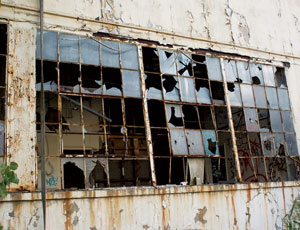Some older American cities are sick and dying. Often strategically located along waterways and important transportation infrastructure, they evolved over centuries to support U.S. heavy industry, which largely has disappeared. Also disappearing with those businesses were jobs, opportunities and people. But they left behind the wreckage of residential, commercial and industrial structures that no longer have a purpose. Cities like Cleveland, Detroit, Baltimore and Camden are struggling to reinvent themselves and start anew, but they are burdened with thousands of abandoned or deteriorated structures that breed crime, drugs and violence and form a barrier to progress.

The opportunity for such cities to reconfigure themselves for lower-density population and new economic missions is needed now. Federal economic-stimulus money can help. As Congress considers a new round of stimulus funding, it should consider the performance of the $787-billion American Recovery and Reinvestment Act of 2009. Since becoming law on Feb. 17, only the $130-billion construction component for improving U.S. infrastructure has shown meaningful results in creating jobs and helping the U.S. economy.
In drafting new legislation, Congress should consider assisting older cities with their demolition programs to rid themselves of blighted structures, many owned by the cities themselves after the former owners walked away. These programs should avoid repeating the unimaginative massive urban-renewal plans of the 1960s that destroyed viable neighborhoods and should not advocate the wanton destruction of historical buildings. Rather, they should be an attempt to set the stage for the future development by erasing blight—wiping the blackboard clean to start anew. Perhaps the most famous example of such a strategy is New York City’s razing of abandoned apartment houses in the 1970s on Charlotte Street in the South Bronx and subsequent construction of single-family homes—a project made famous by visits by three U.S. Presidents. The homes were wildly popular and attracted new middle-class residents.
Many older cities already spend millions of dollars on such demolition programs, but the economy has crippled them. The ARRA legislation shows that construction stimulus is effective, and supporting such demolition would put people to work immediately, offer skills training and help the U.S. economy.

Post a comment to this article
Report Abusive Comment